United Airlines’ meatless menu
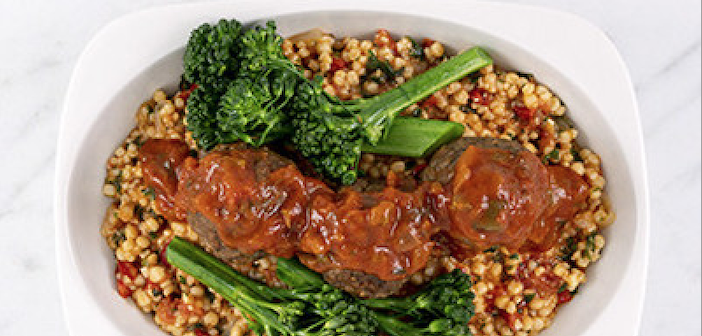
According to a September 2021 Nielsen report (‘Growing demand for plant-based proteins’), more than half of US consumers are increasing their plant-based food consumption, and sales of plant-based meat substitutes are climbing. Many airlines are keen for their inflight catering to reflect this growing passenger preference, among them United Airlines, which is adding more plant-based options to its inflight meals.
The airline is now collaborating with Impossible Foods, a California-based company that develops plant-based substitutes for meat products, perhaps best known for its Impossible Burger, launched in 2016 for Burger King’s ‘Impossible Whopper’ meatless burger. The company has created an exclusive Impossible Meatball Bowl for United Airlines, now available to first-class customers on all domestic flights of more than 800 miles in the continental US, and its Impossible Sausage patties will be available in Polaris lounges in Chicago, Los Angeles, Newark and San Francisco.
“We want our food offerings to evolve and change along with people’s preferences,” said Aaron McMillan, United’s managing director of hospitality and planning. “To many travellers, the quality of food choices at the airport and in the sky are a really important part of the customer experience, so we’re invested in making sure our menu items exceed their expectations. This is the first of many updates we look forward to sharing in the months ahead.”
The Impossible Meatball Bowl features three Impossible Meatballs made from plants and broccolini, served on a bed of couscous and topped with a herb-infused tomato sauce. Impossible Meatballs are made from a mix of Impossible Beef (a plant-based beef substitute) and Impossible Sausage (a meatless sausage patty), seasoned with a savoury homestyle spice blend. Additionally, during breakfast at Chicago O’Hare, Los Angeles, Newark and San Francisco Polaris lounges, United will offer ground Impossible Sausage as an optional omelette ingredient and Impossible Sausage breakfast patties as a buffet option.
Customers in eligible markets can pre-order the Impossible Meatball Bowl through United.com or the United mobile app.
Lebanon is making a comeback with a fresh wave of tourism this summer
Lebanon is anticipating hundreds of thousands of ex-pats and tourists to visit the country this summer. Their imminent arrival will bring a much-needed cash injection to a country previously tormented by an economic and financial crisis.
The Mediterranean nation, known for its vibrant nightlife, beaches, mountain resorts, and cuisine, is preparing for anywhere between 10,000 to 12,000 travellers a day, according to Lebanese Minister of Tourism Walid Nassar.
He adds that hotels and many guest houses are fully booked for the next three months.
Many Lebanese people have left in the past couple years after the economic crisis started. The crisis was exacerbated by the coronavirus pandemic and a massive blast at Beirut’s port in August 2020.
How are businesses preparing for the influx of travellers?
Business owners are hoping to boost their hard-hit fortunes.
“We believe that this year will be among the best years for the country. All of us in this sector are making big investments and we believe in the security and stability levels, and we believe that everyone will come to the country,” says Claude Taber, the owner of Rocca Marina Beach.
“Everyone is coming to Lebanon because there is nothing nicer than Lebanon’s nature. Everyone knows this.”
Rita Dekess, marketing and communications director at The Village, a community of restaurants and bars in Lebanon, says all 20 of their outlets are open.
“We also have about 3,000 frequent customers who come on Saturdays and Sundays. About 2,000 customers come during the week. And all of this is because the restaurants offer excellent quality service and entertainment at very reasonable prices,” she says.
Finnair wins major awards for new Business Class cabin and onboard service
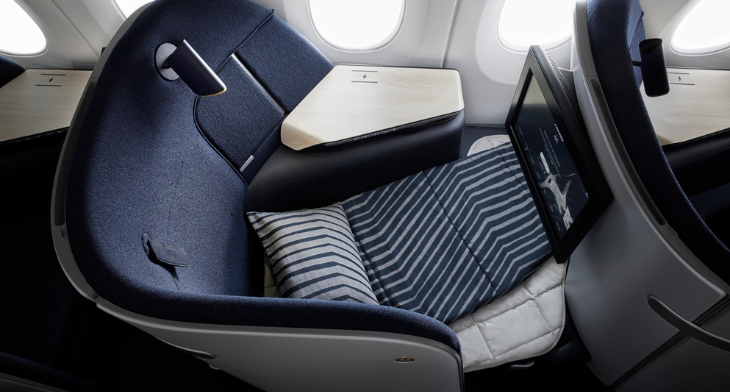
Finland’s flag carrier Finnair has won the gold award in this year’s best ‘Cabin Concept’ category at the Onboard Hospitality Awards for its new long-haul cabin design.
Finnair long-haul cabins feature a brand-new Business Class with an eye-catching, non-reclining seat with fixed living space, as well as a new Premium Economy cabin and refreshed Economy cabin in a sleek new Nordic design.
the carrier’s long-haul offering also helped the airline to win the ‘best onboard textiles’ category for its premium economy neck pillow and woven blanket designed in partnership with Marimekko.
The new tableware designed in partnership with Iittala was also highly commended in the category of “onboard service equipment for passengers”.
David Kondo, Finnair Head of Customer Experience and Product Design, said: “The feedback from our customers and the market for our new long-haul product has been overwhelmingly positive and we are thrilled that Finnair is being further recognised with wins from both the Onboard Hospitality Awards and the International Yacht and Aviation Awards.
“We’d like to thank all of our supplier partners and our dedicated staff who worked for this program over the many years of development to make this experience a reality.”
Finnair was also a finalist for ‘Cabin Concepts’ in the Crystal Cabin Awards 2022 taking place in Hamburg on 14 June, and in addition, the carrier received the APEX 2022 Passenger Choice Award for best Wi-Fi in Europe.
A list of COVID entry rules for every European country
Most countries still have some travel restrictions in place in a bid to control the spread of COVID-19.
The latest big changes include:
Germany, Estonia, Italy, Cyprus, Austria and Greece no longer have any COVID-19 travel restrictions for visitors.
Passengers flying in the EU no longer need to wear masks in airports or aboard flights. Some countries have chosen to ignore this ruling and still require masks. Check the rules before you fly here.
Visitors to Belgium from outside the EU no longer need to show any COVID-19 paperwork to enter.
Masks are no longer mandatory in Spain and mainland Portugal, except on public transport.
This article is updated regularly, but rules can change quickly. So please check official government advice before travelling.
Albania
There are currently no COVID-19 travel restrictions for those wishing to visit Albania.
Andorra
Travel to and from the country is open but access to Andorra requires passing through either Spain or France, so check their travel restrictions, too, before planning your trip.
Austria
All COVID-19 entry restrictions have been lifted for those visiting Austria.
While face masks are no longer required in most parts of the country, you must still wear a FFP2 face mask on public transport and in pharmacies in Vienna.
Belarus
All travel to Belarus should be avoided, due to the risk of arbitrary enforcement of local laws and the armed conflict between Russia and Ukraine.
It’s still possible to travel to Belarus by air under certain restrictions, but land travel for leisure is currently banned.
There are currently no COVID-19 travel restrictions for entering Belarus.
Belgium
Connected to the EU Digital COVID Certificate (EUDCC), which allows restriction-free travel across all EU and EEA countries following proof of vaccination or a negative COVID test.
Visitors from all countries can currently enter Belgium with no COVID-19 travel restrictions.
Belgium does still have a red list system with stricter rules though no countries are currently on the red list.
Masks now only need to be worn in healthcare environments.
Bosnia and Herzegovina
Tourists can now visit Bosnia and Herzegovina with no COVID-19 travel restrictions.
People now only need to wear mask in healthcare facilities.
The Bosnia and Herzegovina border police are publishing regular updates about foreign travel here.
Bulgaria
Bulgaria no longer requires visitors to provide proof of vaccination or a negative test to enter the country.
Croatia
All travellers may enter Croatia without any COVID-19 restrictions.
Cyprus
All COVID-19 entry requirements for Cyprus have been dropped.
You do still need to wear a face mask on public transport however.
Czech Republic
There are no longer any COVID-19 entry restrictions for EU or Non-EU travellers visiting Czech Republic.
Denmark
Denmark has dropped all travel restrictions for international tourists.
Rules may be re-introduced at short notice for high risk countries. The government says it has a ‘handbrake’ it can activate if concerning variants emerge.
Estonia
From 16 June Estonia has scrapped all COVID-19 travel restrictions for visitors from every country.
It has been also announced that from 1 July, people in Estonia who do test positive for COVID-19 or those around them will no longer have to self-isolate.
Finland
Connected to the EU Digital COVID Certificate (EUDCC), which allows restriction-free travel across all EU and EEA countries following proof of vaccination and a negative COVID test.
Visitors from the EU, Schengen travel areas and green list countries can enter Finland with no travel restrictions.
From 30 June visitors from all other countries (including the UK and USA) will no longer have to present proof of full vaccination, recovery from COVID-19 within the past six months or a negative result in order to enter Finland.
The Finnish Border Guard gives advice on cross-border traffic by phone and email. The service is available in Finnish, Swedish and English on weekdays between 8.00 and 16.00 at +358 295 420 100. Questions can also be sent by email to rajavartiolaitos@raja.fi.
France
Connected to the EU Digital COVID Certificate (EUDCC), which allows restriction-free travel across all EU and EEA countries following proof of vaccination and a negative COVID test.
France no longer requires fully vaccinated travellers to present a negative COVID-19 test to enter but
you will still need to complete a passenger locator form (PLF) found here.
Non-vaccinated visitors need to present a negative PCR test taken less than 72 hours or an antigen test less than 48 hours before departure.
It is no longer mandatory to wear a mask on public transport in France.
Germany
Connected to the EU Digital COVID Certificate (EUDCC), which allows restriction-free travel across all EU and EEA countries following proof of vaccination and a negative COVID test.
From 11 June, all travellers will be able to enter Germany without showing any COVID-19 paperwork.
However, due to a lack of a reciprocity agreement between the two countries, this doesn’t apply to those travelling from the People’s Republic of China who still need to provide an essential reason for their entry to Germany.
Greece
All travellers can enter Greece without any COVID-19 restrictions.
Masks ware now only mandatory in healthcare settings and on urban public transport.
Hungary
All travellers can visit Hungary without any COVID-19 restrictions.
Masks are no longer mandatory except for in hospitals and other health care venues.
Iceland
Iceland has dropped all domestic and border restrictions. This means that no restrictions will be enforced at the border and all passengers will be able to enter Iceland whether they are vaccinated or not.
Ireland
Travellers who plan to enter Ireland are no longer subject to entry requirements after the authorities decided to abolish all the restrictions imposed due to the COVID-19.
Though mandatory mask wearing has been scrapped, the Irish government advises that masks continue to be worn on public transport.
Italy
Visitors to Italy are no longer required to show any COVID-19 paperwork to enter.
Masks will still be required on public transport. Although not mandatory, masks are still recommended at large indoor and crowded outdoor events. This is expected to be in place until 22 June.
Kosovo
All arrivals to Kosovo are required to demonstrate that they have either received three doses of a COVID-19 vaccination, have recovered from COVID-19 in the last 90 days or proof of two doses and a negative PCR test taken within 48 hours of arrival.
Medical staff are present at border crossings and you may be subject to a health check, especially if you are showing symptoms of COVID-19.
Whilst in Kosovo, you must wear a mask on public transport and in all indoor public places as well as respecting one metre social distancing rules.
Latvia
Connected to the EU Digital COVID Certificate (EUDCC), which allows restriction-free travel across all EU and EEA countries following proof of vaccination and a negative COVID test.
All travellers are now welcome in Latvia, regardless of vaccination status, and with no need to take a COVID test.
The Ministry of Transport has said that restrictions will apply to those travelling from high-risk areas; but there are currently no countries on this list.
Liechtenstein
There are currently no COVID-19 restrictions for travellers visiting Liechtenstein.
Liechtenstein follows Switzerland’s travel advice, so make sure you check their restrictions at the time of travel.
Lithuania
There are no COVID-19 travel restrictions for any visitors to Lithuania.
Luxembourg
Connected to the EU Digital COVID Certificate (EUDCC), which allows restriction-free travel across all EU and EEA countries following proof of vaccination and a negative COVID test.
Visitors from the EU, Schengen area and San Marino, Andorra, Monaco and Vatican City can travel to Luxembourg with no restrictions.
Visitors from all other countries, unless their journey is considered essential, must provide evidence that they are fully vaccinated or have recovered from COVID-19 in the past 180 days.
Masks must still be worn in hospitals, elderly homes and other care facilities.
Malta
Connected to the EU Digital COVID Certificate (EUDCC), which allows restriction-free travel across all EU and EEA countries following proof of vaccination and a negative COVID test
Malta is operating a traffic light system that determines which restrictions people are subject to based on the country of their departure.
To enter Malta travellers must present proof of full vaccination, a negative PCR test from the last 72 hours, a negative Rapid Antigen Test with the last 24 hours prior, or a certificate of recovery in the last 180 days.
From 6 June, children under the age of 12 from all countries are no longer required to show a negative COVID test to enter Malta.
You no longer need to wear masks in Malta except on flights, hospitals and in care homes.
Moldova
Moldova has lifted its travel restrictions, meaning no COVID certificate, test or other documentation is required to enter the country.
In light of the Russian invasion of Ukraine, Moldovan airspace is currently restricted.
Monaco
Monaco is open for tourists and is following the EU traffic light system to determine restrictions for arrivals.
There are currently no countries on the red list, and all countries not specifically named on the green list are to be assumed as on the orange list.
Visitors arriving from green list countries must present either proof of full vaccination, a negative PCR or antigen dated within the last 24 hours or a proof of recovery in the last six months.
Those arriving from orange list countries must present either proof of full vaccination or a proof of recovery in the last six months. Those who cannot provide either of these options must justify their reason for entry, present a negative PCR or antigen test less than 24 hours before arrival and either isolate for 7 days on arrival in Monaco or take PCR test within 24 hours of arrival and again on day five, six or seven.
Montenegro
Travellers can enter Montenegro without any COVID-19 certificates.
Masks must still be worn in indoor public places and on public transport, including taxis.
Netherlands
Connected to the EU Digital COVID Certificate (EUDCC), which allows restriction-free travel across all EU and EEA countries following proof of vaccination and a negative COVID test.
Visitors from the EU, Schengen area or countries participating in EU travel rules scheme may enter the Netherlands freely without any restrictions.
There is an additional list of safe countries from which you can also travel restriction free. You can find that list here.
For all other countries, you must provide either a proof of full vaccination or proof of recovery in the last 180 days.
Full details for requirements for those in transit are available here.
North Macedonia
The borders are open in North Macedonia and you do not need to show any COVID-19 certificates to enter.
There is still a requirement to wear masks in hospitals, pharmacies and on public transport.
Norway
All visitors can now travel to Norway without any COVID-19 restrictions.
Poland
Poland has scrapped all entry rules for both EU and non-EU travellers.
Portugal
Connected to the EU Digital COVID Certificate (EUDCC), which allows restriction-free travel across all EU and EEA countries following proof of vaccination and a negative COVID test.
All arrivals need to show a vaccine certificate, recovery certificate or negative test result to enter Portugal. This can be either a PCR test taken within the 72 hours before departure, or a rapid antigen test 24 hours before.
Masks are still required on planes and other forms of public transport.
Travellers to Madeira and Porto Santo are no longer required to present COVID-19 travel documents on entry to the islands, however, as the archipelago abolished its entry measures.
Masks also must be worn by everyone over the age of six in indoor public settings in Madeira.
Romania
All travel restrictions imposed due to COVID-19 no longer apply when entering Romania. That means travellers arriving in Romania are exempt from providing a pre-departure test, on-arrival or post-arrival test or proof of vaccination.
Russia
Travel to Russia is not advised due to the lack of available flight options to return to Europe, and the increased volatility in the Russian economy.
On 24 February 2022 Russia launched a large scale invasion of Ukraine which is ongoing.
All arrivals into Russia will be temperature checked and will be required to provide a negative PCR test result dated within 48 hours prior to arrival. This applies regardless of vaccination status.
All foreign passengers must complete a travel form before arriving in Russia. These are usually handed out by cabin crew on arriving flights.
San Marino
Connected to the EU Digital COVID Certificate (EUDCC), which allows restriction-free travel across all EU and EEA countries following proof of vaccination and a negative COVID test.
Currently all travellers can enter San Marino without any restrictions, however countries could be added back onto the exception list at short notice so double check before you travel.
If you are accessing San Marino through Italy, you’ll need to check Italy’s travel advice before you set off.
Masks are still required on public transport and in healthcare facilities. This is expected to be in place until 30 September 2022.
Serbia
There are no restrictions on entering the Republic of Serbia.
You must still wear face masks in health facilities and it is recommended to wear them in busy indoor public places.
Slovakia
All travellers can now enter Slovakia without any COVID-19 restrictions.
Slovenia
Connected to the EU Digital COVID Certificate (EUDCC), which allows restriction-free travel across all EU and EEA countries following proof of vaccination and a negative COVID test.
Slovenia has dropped all domestic and border restrictions. This means that no restrictions will be enforced at the border and all passengers will be able to enter whether they are vaccinated or not.
You must still wear a mask in indoor public spaces and on public transport.
Spain
Connected to the EU Digital COVID Certificate (EUDCC), which allows restriction-free travel across all EU and EEA countries following proof of vaccination and a negative COVID test.
Visitors from EU or Schengen Areas no longer need to show any COVID documents to enter Spain.
Travellers from outside the EU and Schengen Area must be able to present proof of vaccination, a recovery certificate or a negative test using either the EUDCC or by completing this form. This means unvaccinated visitors from all countries can now visit.
If you’re entering Spain via land from France, you do not need to present any COVID-19 paperwork.
To be considered fully vaccinated you must have received a second or third dose in the last 9 months. Children under 12 years old are exempt when travelling with an adult.
Masks are still required in healthcare settings and on public transport.
Sweden
All travellers can enter Sweden without any COVID-19 restrictions.
Non-vaccinated people are recommended to avoid crowded, indoor places.
Switzerland
All travellers can enter Switzerland with no COVID-19 restrictions.
Türkiye (Turkey)
All visitors to Turkey, now called Türkiye, can enter the country with no restrictions whether they have been vaccinated or not.
Ukraine
Travel to Ukraine is not recommended at present due to the ongoing conflict. Check your own country’s foreign travel guidance for more information.
United Kingdom
The UK has abolished all remaining COVID-19 travel restrictions for all arrivals from other countries.
The government recommend masks in busy, public places and you must wear still wear them in hospitals.
Rules for travel into and out of Wales are available here.
Rules for travel into and out of Scotland are available here.
Rules for travel into and out of Northern Ireland are available here.
Vatican City
Vatican City has reopened its doors to tourists following the easing of Italy’s travel restrictions.
5 great places to go wild swimming in South of Wales
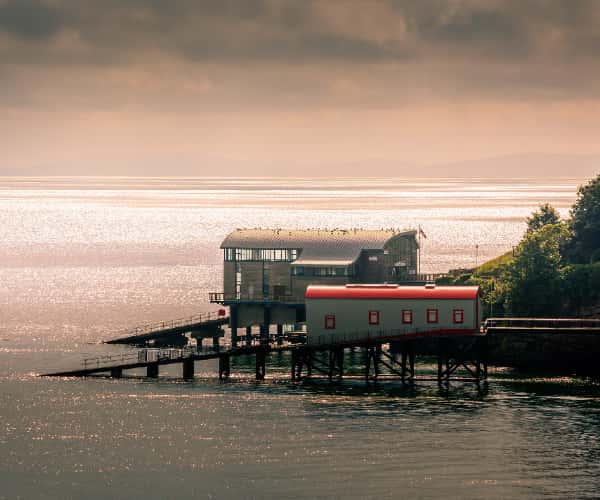
Wild swimming is a release, the likes of which are unrivalled. Such is the nature of wild swimming, it can be done in many different places, be it sea, lake, river or ocean.
Wild swimming offers you a unique experience, to feel more alive and to give you time and space in a natural environment to relax and be with nature. It’s a calming experience, even for those who seek thrills from waves and rapids. And while South Wales is one of the best places in the whole of the UK to enjoy an extensive range of exciting activities such as cycling, hiking, photography and wildlife watching, this beautiful region also lends itself to one of the most exhilarating natural experiences on offer: wild swimming.
From gorgeous beaches to secluded pools, there are plenty of places to take a refreshing dip in the South of Wales during your stay. Below, we’ve listed just a few of our favourite wild swimming hotspots.
1. Barafundle Bay, South Pembrokeshire
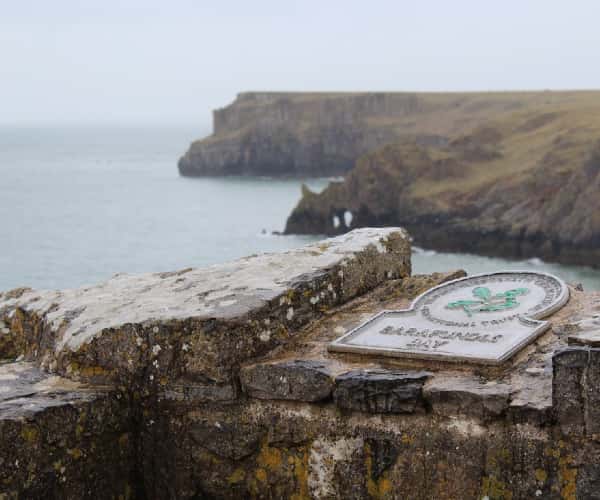
One of Wales’ most exquisite beaches, Barafundle Bay is the perfect place to take a dip in the inviting waters of the stunning Welsh coast. If you’re looking for a picturesque alternative to wild swimming in the countryside, we recommend heading to this beautiful bay in Pembrokeshire where welcoming waves and golden dunes make this a truly postcard-perfect setting to enjoy with swimming with family or friends.
2. Little Canyon, Pontneddfechan
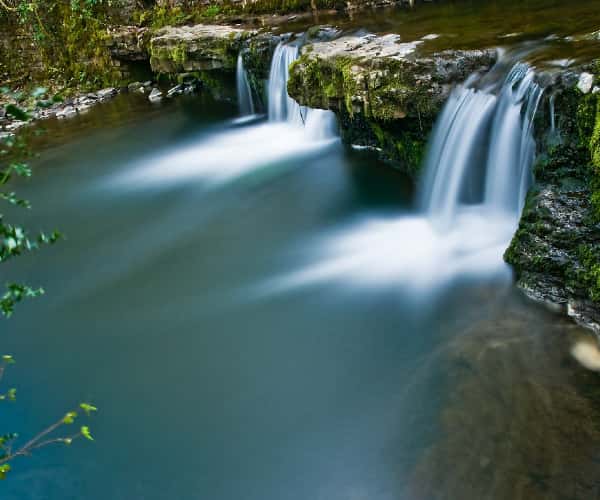
Nestled away in the stunning little village of Pontneddfechan (Pontneathvaughan in English) is Little Canyon; a secluded pool that’s perfect for gorge swimming and underwater exploring. A popular wild swimming spot for both locals and visitors, this crystal-clear pool meanders along for 30 metres to create a narrow channel and is accompanied either side by large rocky hillsides that provide the ideal base from which to jump into the shimmering waters below. A visit to Little Canyon is not recommended after heavy rainfall as the area can become flooded and, subsequently, a little dangerous but you will find this accessible spot a great place to explore in good weather.
3. The River Usk, Brecon Beacons
![]()
Winding between the mountainous terrain of the Brecon Beacons, the River Usk flows for around 75 miles, meaning as a wild swimming spot, you can take your pick of multiple entry points. Take a refreshing dip in the charming pools at Llangynidr or at the island picnic site near Usk while your little ones play in the glistening water nearby. Whichever part of the River Usk you visit, a swim in this enchanting waterway is sure to make for a truly memorable experience during your South Wales glamping holiday!
4. Broad Haven Beach, North Pembrokeshire
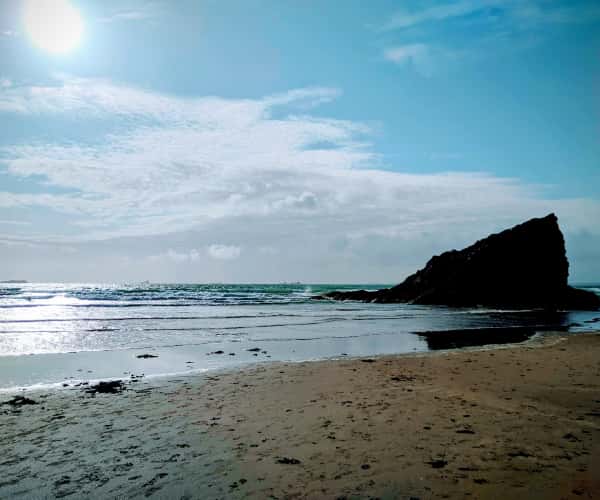
Known for its golden sandy stretch and breath-taking views of St Brides Bay with Lion Rock looking over proceedings, Broad Haven is an idyllic location in which to enjoy a spot of coastal wild swimming while glamping in West Wales. Not to be mistaken with Broad Haven South, near Barafundle, Broad Haven is found just outside of Haverfordwest on route to Nolton and Solva. A more accessible beach than it’s Southern namesake, not only do the beach’s shallow waters make this an ideal location for swimmers of all ages to spend some time splashing about in the waves, but with lifeguards on duty between June and September, parents can rest easy knowing that their little ones will be safe while they relax on the sand nearby. Currents pull from left to right, however, so do take care.
5. Horseshoe Falls, Pontneddfechan

Feel the cooling spray of the waterfall tickle your face as you float atop these serene pools, watching the world go by and listening to the sound of birds as you glide along the surface. For those who don’t fancy taking a dip, the riverbanks nearby provide great spots for several other relaxing activities such as photography, reading and wildlife watching. Another of Pontneddfechan’s prime wild swimming spots, Horseshoe Falls comprises of two shimmering pools that lie beneath a majestic waterfall. As such, if you’re looking for a fairy tale setting where you can experience a peaceful swim in the heart of nature, this is the place to go.
Wild swimming can be great fun; a good release for your body and mind, and has may hidden benefits, but you do need to take care and make sure you properly understand the dangers involved too, so to help you make the best choices when taking to the water. Here are some good tips to stay safe.
Safety & general information on swimming in the Wild
- Research your spot. If you’re about to jump in with two feet first, know what you’re jumping into. Do your research before swimming in a new spot – find out if others swim there? Find out if swimming permitted? If the answer is no, don’t risk it.
- Do your checks when you get there. Check things like the depth and speed of the water before you get in – especially in the sea or ocean, or before getting into rivers where there are rapid. Currents have drags that take you away from safety. You should check carefully for any hidden rocks as you get in try to enter and exit in the same spot. In rivers, avoid areas with fast-flowing currents that you do not know where they end.
- Know when (and where) to quit. Know your exit point. It is just as important as the conditions of getting in. Have backup exit points planned, in case of emergencies. Search out your (easy, if possible) exit points before entering the water.
- Gear up. Make sure you wear the appropriate gear for swimming. In colder weather, wear a winter wetsuit, and consider a summer suit for the warmer climbs. You don’t have to if you’re more comfortable without cover, but only do so in the right conditions and in ones you can cope with. Make sure you wear appropriate, water-resistant shoes with a good grip when you’re swimming off rocks.
- Don’t go wild swimming alone. Go swimming with a friend or buddy where possible, and have each other’s back. Always keep a check of where they are and what they are doing.
- Warm-up upon exit. Start warming up as soon as you get out – keep some warm clothes, towels or blankets, socks and a coat handy and if you can, have warm drink as soon as possible.
- Swim clean. An important one. Swim sober and be as alert as you can be when you enter the water. Respect it, and if you’ve indulged in any form of liquid, sit this one out. Only swim where the water is clean and avoid at all costs swimming in city rivers and canals – the water can carry harmful bacteria in built-up areas, and you do not want to be in that. Lakes and ponds can also be home to bugs, so avoid swimming anywhere with stagnant water or surface scum sitting on top of the water.
- Join a club. Wild swimming is a growing sport and many seasoned locals can help you gain confidence and knowledge of local reefs or swimming spots. This keeps you safe and informed.
By Tim Rees
Etihad Airways returns to London Heathrow Terminal 4

Etihad Airways has confirmed it will return to London Heathrow’s Terminal 4 from 22 June 2022.
Jeremy Pollock, country manager, UK & Ireland, Etihad Airways, said: “We are absolutely thrilled to announce that we are returning to our true home at London Heathrow’s Terminal 4 in June. We’ve had a temporary home at Terminals 2 & 3 during the pandemic, but with Terminal 4 opening back up alongside the tube and Heathrow Express, our crew are excited to welcome our guests back at T4.”
“Our guests will once again be able to enjoy the full glory of our customer service, people-focused crew and smooth operations. The Etihad Lounge will also be re-opening, available to our First and Business travellers, as well as Etihad Guest Platinum and Gold members.”
The Etihad Lounge has separate areas for relaxing and dining, as well as a children’s playroom.
Etihad has also confirmed that from July to September 2022 it is increasing its current four daily flights from London Heathrow to five daily flights. Also from July, Etihad will increase its services into Dublin to offer a daily flight, and continue to operate daily to and from Manchester.
A guide to lavender blooming in Provence

While lavender blooms all over France’s southern region, two hours north of Bandol are field upon field of the iconic herb. You have until early July to visit the fields in Provence. From mid-July, you can see the harvest in the Valensole plateau. However, if you what to see the most delicate lavender in bloom just before harvest, you will need to travel to Chateau du Bois before the 15th of June (though their products are available online all year round).
Just as the world is reopening from its gloom, this healing flower will show its colours. It feels like an open invitation to come to see its beauty and breathe its soothing scent. Now is the time to start planning your trip if you want to enjoy the spectacle.
Here we offer a guide to lavender and Provence, two words that are considered almost synonymous.
Why are we so in love with lavender?
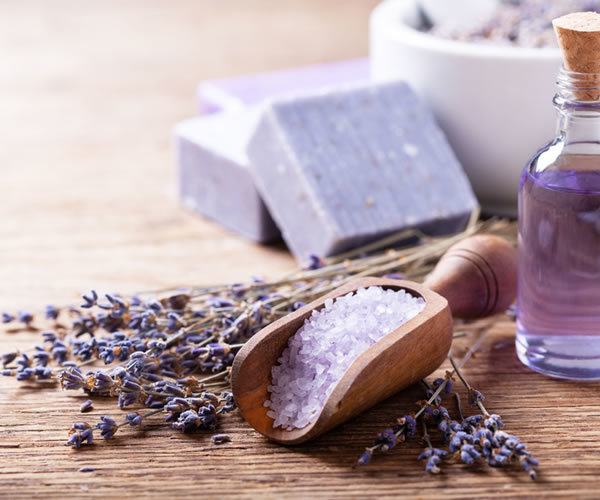
There is something visceral about the strips of bright colours that adorn Provence’s fields from June through to August. Artists will tell you there is something vital and warming about the Provence light. When the sun shines, the sky is that vibrant cobalt, and the flowers bloom, you will feel the spiritual connection that all natives to the region cherish.
It is the calming and delicate fragrance that has enchanted most. People use lavender as an aid to sleep, as its aroma has a relaxing effect on our bodies. Since the Middle Ages, lavender has been used as both a sedative and an anti-bacterial agent. Lavender was the go for injuries and those pesky aches and pains. It was It is also used for its taste, incorporated into oils, sorbets, and honey. You can buy cordials, cakes, and ice creams. Local chefs play with this ingredient as a means of encapsulating Provence on your plate. Check out the Parfait a la Lavande at the Restaurant Les Lavandes in Monieux for a real delicacy.
For Provence, lavender is an industry. It may supplement the tourist sector, but there is the production of essential oils and fragrant water or dried for scented objects. No matter where you travel, even in the quiet beachside streets of Bandol, stores will stock all things lavender, from soap to tea. But make sure you check the label, as a lot of the products are mass-produced outside of France. Look for that artisanal label that tells you that you are supporting the field workers of Provence.
Before you believe that lavender is just lavender, there are three types to look out for. There is the fine lavender that is the most delicate and most expensive. It is this lavender that will soothe your anxious mind and allow for restful relaxation. If you are not ready to invest in this fine lavender, then you will love lavender aspic and lavandin.
Luberon Valley
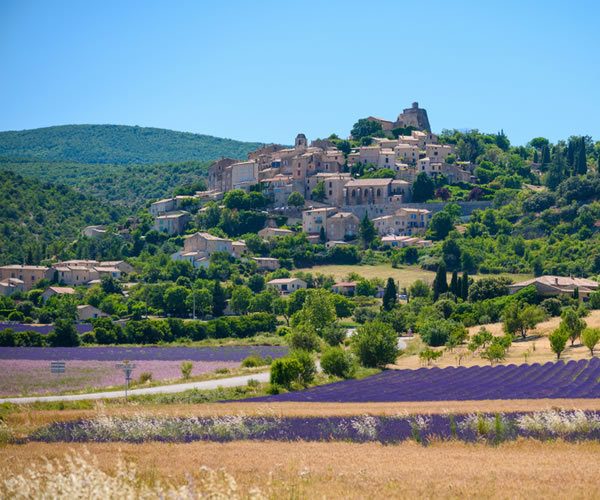
Closest to Bandol is the Luberon Valley, which is the epitome of Provence’s rolling hills, blanketed in lavender fields. While you would take a day trip to the Luberon Valley for the winding streets and idyllic village scenes, the lavender is still spectacular. Even though it is not the sprawling mass of lavender fields, the mix of idiosyncratic villages and delicate farmlands is a treat.
A place where you really want to go is the Senaque Abbey. This is a working monastery and accepts visitors if these tourists are respectful. You can take a tour of the chateau by appointment, taking an organised tour with a knowledgeable guide. Yet, the unique rows of purple lavender will be a holiday memory for those who want to gather experiences in their back pocket.
As the fields are high in the hills, the elevation allows for the fragrance to linger more finely in the air.
The Valensole Plateau
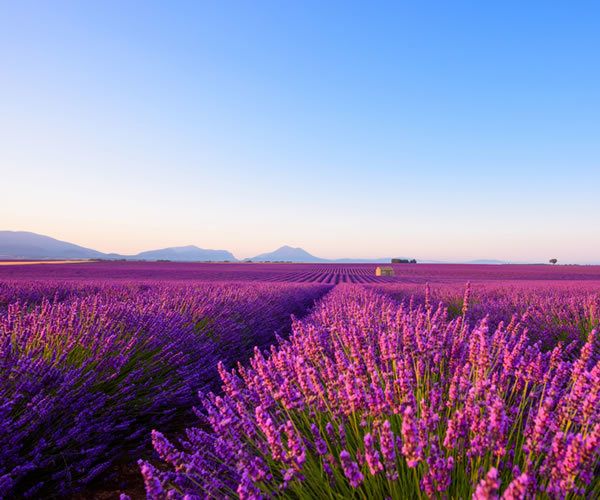
A little further away, another 10-to-20-minute drive further north, is the Valensole Plateau. It is here you will find the most famous and photographed lavender fields in the world. There are fields upon fields of lavender as well as sunflowers. It is a spectacle worthy of exploration – and a little more time on your car journey. The crop fields are interrupted by scattered deep blue lakes and the most idyllic villages.
If we had to commit to one of our favourite sights in the world in Provence, it is the lavender field framed by sunflowers – it is spectacular and will move even the most practical curmudgeon’s soul.
The one must photograph moment is at Lavandes Angevin. Here you will find uninterrupted views of lavender in full panorama. The lavender is only dotted with the most perfectly planted trees – as if placed to offer layers to your composition. Here your car will be your best friend, as you will want to trundle through the lanes and immerse yourself in the beauty.
Why bother travelling a little further?
You will find lavender fields and lavender products close to the coast too. If you want to see the colour and smell the fragrance, you can enjoy this near Bandol.
Why are we suggesting you make a day trip north to the expanses of lavender fields harvested in June and July?
For some, it is a romantic moment and a chance to be somewhere where great poets and painters have been inspired. There is nothing more moving than a trip with your lover to the fields at sunset to see the golden light cast over the fields.
For others, it is the smell of holidays from childhood in the south of France. It is skipping down the lanes and exploring – sometimes jumping on bikes with your family in the rich sunshine – stopping beside one of the beautiful lakes for a picnic.
In short, it is a journey you take because it will add your store of memories, captured in stunning technicolour.
A final note
If you make this day trip, do so with respect. The fields of lavender are a business for locals in the region. Tread carefully and leave only your love behind.
By Su Stephens
Emirates First Class offers complimentary Home Check-in service for Dubai and Sharjah customers
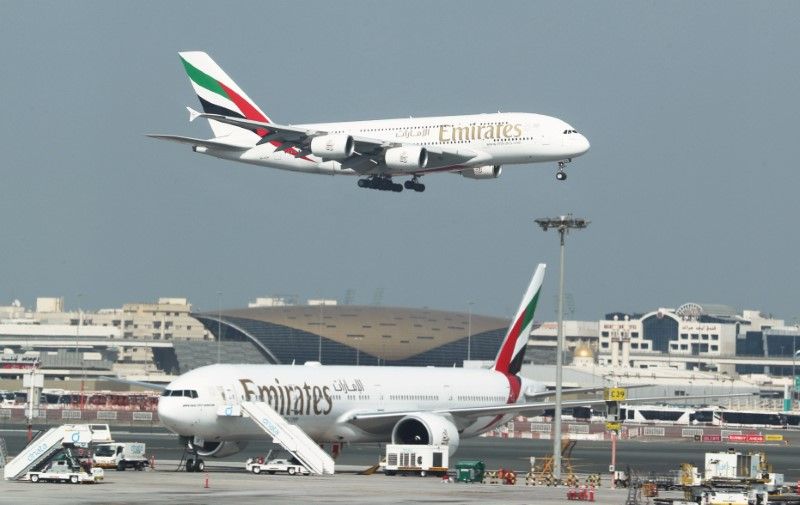
Emirates has added another First Class experience with a new Home Check-in Service that offers customers the option to check in from home in a comfortable and convenient manner.
This service is provided free of charge to Emirates’ First Class customers based in Dubai and Sharjah, where the Check-in Agents will visit their homes or hotels at pre-booked timings to complete all check-in formalities, including document verification, checking-in of baggage, and issuing boarding passes. There is an allocated counter at the airport for any last-minute extra luggage.
The Check-in Agents will take the luggage directly to the airport, while customers can choose to go to the airport at their convenience using the pre-booked Emirates complimentary chauffeur-drive service.
The complimentary Home Check-in service must be booked at least 24 hours prior to flight departure time and the latest check in for the home service is six hours before the flight’s departure.
On arrival at Dubai International airport (DXB), which must be minimum of 90 minutes prior to the flight, customers can proceed directly to immigration and security, and then continue to Emirates’ dedicated First Class Lounge.
Why Switzerland’s ‘little Italy’ is a must-see town for your travel bucket list
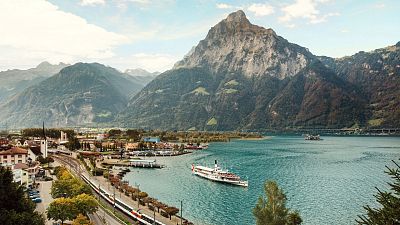
Cuckoo clocks, precision watches and fondue are just some of the things you might associate with Switzerland. Lizards, pizza and neoclassical buildings not so much.
Yet Ticino, an Italian-speaking canton in the south of the country, known for its balmy climate and subtropical gardens, as well as – naturally – breathtaking Alpine scenery, has them all.
Just over an hour’s drive from Milan or a panoramic train and ferry journey south from Lucerne, Ticino is Switzerland’s very own little Italy.
An unashamedly Italian region
Situated on the northern shores of the glacial Lake Lugano, Lugano is unashamedly Italian, with a culture closely related to Italy’s Lombardy region.
The historic city of 70,000, an important banking centre, is packed full of Italianate buildings, Mediterranean-style squares and beautiful parks, like Parco Ciani, which sits right by the lake and contains a jetty and a library, as well as plants and trees from all over the world.
It’s all overlooked by the soaring Monte Brè and San Salvatore mountains. Sit and watch the world go by over a cappuccino at Vanini Dolce e Caffè in Piazza Riforma. Or try a slice of ‘bread cake’, a local speciality made from amaretto, grappa and stale bread (it’s far tastier than it sounds) from Gabbani salumeria on Via Pessina.
Morcote is Ticino’s most beautiful village
An hour’s ferry ride from Lugano and just a 20-minute drive to the Italian border, Morcote is one of Ticino’s loveliest villages, a lakeside idyll flanked by multi-million dollar villas that cling to the lower slopes of Monte Arbostora.
Ristorante della Torre has created the perfect lunch spot with an open-air covered terrace overhanging the lake and serves gourmet pizza and other Italian cuisine.
Work off the calories with a climb up 402 steps to the Chiesa Santa Maria del Sasso, a 15th-century church with frescoes and a view to die for.
In Parco Scherrer, a stepped Italianate garden named after its late founder and passionate gardener Arthur Scherrer, tiny lizards dart among the cypresses and eucalyptus trees.
While mini versions of the Trevi Fountain in Rome and an Arabian palace add a note of playfulness.
If you’re looking for a romantic wedding location – and you couldn’t do much better than this – you can rent the gardens for your big day.
Make a splash in Locarno
Pretty Locarno, a resort town situated on the northern shore of Lake Maggiore at the base of the Alps, is famous for having the sunniest climate in Switzerland.
It also hosts an annual film festival (this year is its 75th anniversary) in Piazza Grande which attracts Hollywood A-listers and there are various fine art collections in the splendid palazzi hidden in the hillsides.
To relax after a day’s sightseeing, take a dip in the Termali Salini & Spa, a public saltwater pool and spa overlooking the lake and mountains. When the mercury rises in summer, cool off in Lido Locarno – it has an Olympic-size outdoor swimming pool, as well as thermal pools, water chutes, slides and wave effects and is a fun day out for adults and children.
For a place to stay, Hotel Belvedere has 90 refurbished rooms, tropical landscaped gardens and a funicular stop just outside the grounds. Opened in the late 19th century, it’s set on a hillside with panoramic views over the lake and Locarno itself. A double room with balcony, lake view and buffet breakfast starts from €282.
Bellinzona is Ticino’s picturesque capital
Dominated by the “tre castelli”, three 15th-century castles built by the dukes of Milan and now a UNESCO World Heritage site, Bellinzona is the capital of the Ticino, one of Switzerland’s 26 cantons, or regions.
Visit for the lively weekly market (held on Saturday mornings), picturesque piazzas and wide choice of independent boutiques and cafes. The city is also one of the main stops on the Gotthard Panorama Express, a thrilling four-hour train and boat ride through fairytale Alpine scenery to Lucerne in the German-speaking part of Switzerland, 140km to the north.
On the way, you’ll pass Swiss folk hero William Tell’s chapel and the Rütli meadow, where Switzerland was founded in 1291. A second-class ticket costs €51.50.
Ascona is made for the passeggiata
With its mild climate and traffic-free lakeside promenade dotted with cafes and restaurants, Ascona, on the northern shore of Lake Maggiore was made for the passeggiata, the leisurely evening stroll beloved of so many Italians.
The Latin ambience continues in Borgo, the old town, where narrow, winding streets contain more interesting places to eat and the 16th-century bell tower of San Pietro e Paolo church serves as a landmark.
In the Maggiatal and Centovalli valleys nearby, there are lots of hiking and biking trails and, on the edge of town, an 18-hole golf course.
Future aircraft cabins will have heat sensors, new lights and sugar cane

From sensors to monitor whether you’re securely strapped in during turbulence right through to “Jedi” reading lights, bionic windscreens and a wealth of inflight entertainment (IFE) options, there was plenty on show at the Aircraft Interiors Expo in Hamburg.
The show, which brings together airlines, designers, engineers and manufacturers, to show off new concepts and products for aircraft cabins and IFE, is being held for the first time since 2019 as a result of the COVID-19 pandemic. While footfall seemed lower than in previous years, exhibitors were happy to be back and enjoying the face-to-face meetings.
AeroTime found some interesting products that may or may not be coming to an aircraft near you soon. AIX runs from June 14-16, 2022 in Hamburg.
Smart seatbelts and noise canceling headrests
German company ACM Aircraft Cabin Modification was touting its range of “smart products”, including a seat belt that senses whether you’re strapped in and heart monitors that can tell if you’re stressed. The seatbelt sensor is a similar concept to those found in cars, which flash warnings if the driver or passenger are not strapped in.
“It’s especially useful during turbulence,” managing director Arash Noshari explained to AeroTime in Hamburg. “It means the crew can quickly get an overview of whether passengers are buckled up.”
The company has also developed sensors that can be embedded in seats to monitor heart rate, providing an ECG-style readout. The use case scenario here is for pilots, Noshari said. If aircraft manufacturers such as Airbus and Boeing want to move to single-pilot technology then there must be a way to monitor the health of the pilot, which is where the ACM sensor would come in. Should the pilot become incapacitated, people on the ground could be alerted and then potentially control the aircraft from the ground to a safe landing.
The third smart product the company has developed are headrests with active noise canceling, which Noshari said can reduce sound energy by 30%. ACM is currently in the test phase for all the products, with regulatory approval to come later.
“We are convinced by the products, we think these are the future.” he said. While waiting for approval for the products, ACM has had success in recent months with something more mundane – cargo nets to secure freight.
“Jedi” reading lights
German glass manufacturer Schott displayed its brand-new pebble-like reading light, Jade Reading Light, at the Expo, which it says is the first glass-based, touch function light for aircraft.
The smooth light has no moveable parts, thus reducing maintenance costs and because it is glass, can have any design printed onto it, such as wood or marble effect or branding, making it highly customizable for airlines, Philip Fischer, vice president industrial, aviation & automotive, told AeroTime. Airlines can also control the color of the light during boarding, for example, to match their branding.
For passengers, swiping with your finger dims the light or changes the position of it slightly. “You feel a bit like a Jedi with this,” Fischer said with a smile. The light will also follow the movement of the seat, if the passenger reclines it to a lie-flat position.
In these pandemic times, the Jade light also offers another advantage, Fischer said. It can be easily cleaned with a quick wipe, unlike other lights with their moveable switches or lamps.
Schott has teamed up with seat manufacturer Thomson for the light, which was being displayed at a trade fair for the first time.
No more cold galleys
Ever noticed how some areas in aircraft feel really cold? This reporter has spent some time on a 15-hour flight sitting near the doors and can vouch that the floor gets very cold there. AeroTime has even heard stories of how cabin crew resort to woolen socks or use bottles filled with warm water to keep their feet warm in the galleys.
According to Lufthansa Technik, it can get as cold as -10C (14F) in the galleys during a flight, especially in the lower areas due to cold air flow. That makes it not only uncomfortable for crew while they are working, but condensate can also collect on door seals and mechanical parts, freezing in cold weather and potentially preventing the doors from opening.
But the German company, part of Lufthansa Group, has found an answer. Lufthansa Technik said it has signed a deal to provide its HeatNOW floor heating product to Condor on its A320 fleet. The system consists of a heated pad connected to the onboard power and can be installed on almost any floor panel. Lufthansa Technik said it is ultra-thin and lightweight with much better performance and reliability than standard heated floor panels.
Niels Dose, product sales manager, said in a press release during AIX that Lufthansa Technik had been asked by several airlines to develop a cost-effective alternative floor heating system.
“For cargo aircraft operators, HeatNOW is also extremely interesting as an additional floor heating system in the forward galley area between the cockpit and the main cargo bay, where the cargo attendants spend time during the flight,” Dose said.
Sugar cane cabins?
Supplier FACC unveiled what it termed a “radically new” cabin concept at AIX, promising more sustainability and passenger comfort.
The company said it has spent several years developing a new lightweight material derived from sugar cane, which it said is well-suited for use in aviation because it is extremely robust and resistant to heat and chemicals.
It also unveiled a concept for in-flight entertainment, with the entire back of the seat being transformed into a screen that can be connected to the passenger’s own device.
Finally, it said it had redesigned the interior to make better use of available space, making it wheelchair accessible. The concept also included a disability-friendly lavatory.
“In terms of accessibility, there is, quite literally, still a lot of room for improvement in aviation,” Nico Langmann, Austrian wheelchair tennis player, commented in an FACC press release.
Were you at the AIX in Hamburg this year? Share with us your thoughts about what you saw!
Delta and United are making changes to their food and beverage offerings
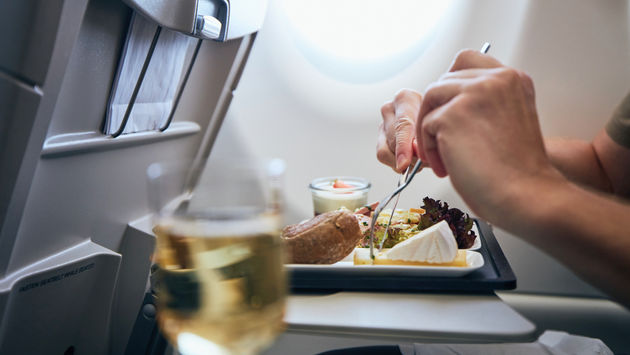
Delta Air Lines and United Airlines are both making changes and additions to their food and beverage offerings ahead of the typically busy summer travel season.
Starting this month, Delta customers will be able to sip on new farmer-direct teas, cold-brew coffee, sparkling wine and beer and snack on an updated selection of treats. Domestic First-Class customers will also enjoy a variety of welcome beverages and refreshed seasonal meals on board.
The lineup of new products highlights small businesses, suppliers from across the globe and woman- and LGBTQ+-led brands, building on the airlines’ recent efforts to create a people-first and values-led experience.
In recent months, Delta has announced partnerships with the nation’s first Black-owned distillery, Du Nord Social Spirits; elevated its onboard wine offerings with Imagery Estate Winery and introduced premium Delta One amenity kits made by Mexican artisans in partnership with Someone Somewhere.
“We’re always listening to what our customers tell us they’d like to see onboard, and we’re giving them more of what they say they’re craving, while also making an impact in global communities,” Delta Senior Vice President Kristen Manion Taylor said. “Our collaboration with brands like Thrive Farmers builds on our mission to partner with companies who do good in the world by enriching the lives of the people who create their products.”
United also announced the addition of two new Impossible Foods menu items on select flights and in certain airport lounges, as part of the airline’s new push to add more plant-based options to its food offerings.
As part of a new collaboration between the carrier and Impossible Foods, the United-exclusive Impossible Meatball Bowl is now available to first-class customers on all domestic flights more than 800 miles in the continental U.S. The Impossible Sausage is available in Polaris lounges in Chicago, Los Angeles, Newark and San Francisco.
Starting this week, customers in eligible markets can pre-order the Impossible Meatball Bowl through United.com or the United mobile app.
“We want our food offerings to evolve and change along with people’s preferences,” United Managing Director of Hospitality and Planning Aaron McMillan said. “We’re proud to work with Impossible Foods and think our customers are really going to love these new options.”
Delta Air Lines opens renovated Sky Club at Nashville Airport

Delta Air Lines announced the completion of its renovations of the Delta Sky Club at Nashville International Airport (BNA).
Measuring four times its original size (13,500 square feet), the Nashville airport’s Delta Sky Club will feature 18-foot-high ceilings, private phone booths, sleek finishes and new furniture with seating for up to 275 travelers.
The Delta facility boasts an expansive new kitchen to offer enhanced food and beverage services, serving seasonal, chef-inspired food options. It also features an upgraded beverage station, a new premium bar and a temperature-controlled wine display.
The Club also pays homage to Nashville’s music scene through a chandelier shaped like a guitar pick, wood slats on the ceiling and walls that mimic guitar strings, LEGO portraits of country music legends and more.
“Every aspect of this Club was thoughtfully curated and designed, from the artwork to the seating options,” Delta Sky Club Managing Director Claude Roussel said. “We are thrilled to offer customers traveling through Nashville the spacious, premium Club experience they deserve.”
Other improvements to the Nashville airport Club include three self-service kiosk stations, two gender-designated restrooms and one all-gender restroom, exterior glass that automatically tints to reduce heat gain and glare and more.
Delta operates up to 36 flights daily to all nine United States hubs from Nashville.
Earlier this month, Delta partially opened its new Terminal C at LaGuardia Airport in New York City, with plans to complete the $4 billion transformation by the end of 2024, almost two years earlier than originally planned.
The world’s most underrated food destinations
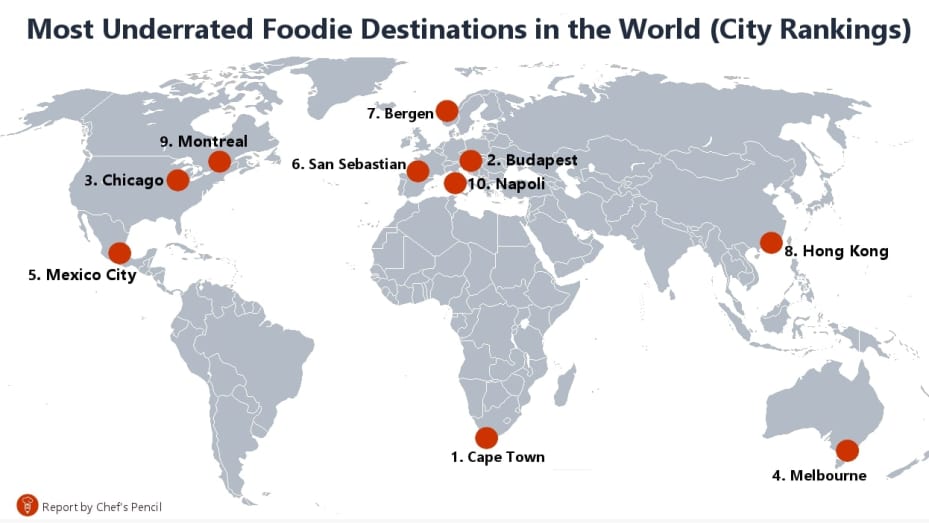
Paris, Tokyo and Rome — the same places have long dominated lists of culinary powerhouse destinations.
But what about other cities and countries that deserve a share of the spotlight? These are the places that hover under the radar because of misconceptions, a small diaspora or a global lack of familiarity with a particular cuisine.
Cooking website Chef’s Pencil sought to highlight these locations when it asked 250 chefs and food enthusiasts to name the most underrated food destinations in the world.
The world’s most underrated food cities
The results from the Chef’s Pencil survey were released in November. It named these locations as the 10 most underappreciated food cities in the world:
1. Cape Town
2. Budapest
3. Chicago
4. Melbourne
5. Mexico City
6. San Sebastian
7. Bergen (Norway)
8. Hong Kong
9. Montreal
10. Naples
Several cities on the list — most notably San Sebastian — are well-known gastronomic destinations, which signified voters “felt they … lack the international recognition they truly deserve,” according to Chef Pencil’s website.
The Australian food mecca of Melbourne is another. The city has developed a reputation in recent years for its robust culinary scene, with exports such as “flat white” coffee and “avocado toast” taking off around the world. Neither has roots that trace back to Melbourne, but the city’s thriving café scene is credited with popularizing both outside of the continent.
Both are part of Melbourne’s “third wave” coffee scene, which elevated the morning drink from afterthought to an artisanal beverage to be studied, scrutinized and sipped throughout the day. From food menus to interior aesthetics, Melbourne-style cafes are now popping up around the world and are common in places such as Singapore and Hong Kong.
The city’s culinary scene is more than its coffee, said Mark Dundon, who has been called “the godfather of Melbourne coffee.” He said the people of Melbourne are what’s behind its rise in international gastronomic prominence.
“The city has … strong European and diverse international heritages,” he said. “We are well versed in what’s happening around the world, and we are more than happy to let those experiences influence our own take on what we want in hospitality,” he told CNBC.
Melbourne’s food scene, which emerged from the city’s “beautiful multicultural background,” said Dundon, is evident in lists of its top places to eat, from buttery pastries at Lune Croissanterie and New England lobster rolls at Supernormal, to Xiao Long Bao (dumplings) at Hutong and upscale “bush food” at Attica, one of Australia’s most celebrated fine dining restaurants.
“Australia is really becoming more and more confident of its individuality,” said Dundon. “I think recognition takes time, and it’s happening.”
The most underrated food countries
Chef’s Pencil also released the countries most cited as having underappreciated food scenes. The list included:
1. Philippines
2. Vietnam
3. Mexico
4. Croatia
5. Thailand
6. Peru
7. Australia
8. Jamaica
9. Portugal
10. Norway
Asian food can, of course, be found throughout the world, with Thai, Chinese, Japanese and Indian cuisine leading the way. The foods of the Philippines and Vietnam, however, have failed to make as big of a global splash.
A 2019 YouGov survey of more than 25,000 people ranked Filipino food near the bottom of a list of 34 cuisines, tied with Saudi Arabian food and beating only Finnish and Peruvian cuisine in terms of popularity. Though Filipino food has long been dogged as being oily and bland, its top-ranking score on the Chef’s Pencil survey implies food specialists may know something about the cuisine that regular travelers do not.
Anais Martinez, a culinary tour guide and founder of The Curious Mexican food website, believes negative connotations have damaged Mexico City’s food standing as well.
“I think that people only thought of Mexico City as a place full of crime, kidnapping and pollution,” she told CNBC. “It only became famous a few years ago when they realized we are an amazing food hub with some of the best food in the country.”
A common misperception that there is only one kind of Mexican food hasn’t helped, she said.
“Mexico is such a huge country — the food, ingredients, techniques and traditions vary immensely from one place to another, which makes regional food incredibly different and interesting to discover,” said Martinez.
Though Mexico is now famous for high-end restaurants as well as its street food, people still confuse the cuisine with adulterated versions.
Anyone eating a “hard shell taco with shredded cheese, iceberg lettuce and taco seasoning” isn’t eating real Mexican food, said Martinez. Tacos al pastor is however; nearly 42% of polled residents named it as Mexico City’s most iconic dish in a Time Out survey released this week.
She advises travelers in Mexico City go to a mercado, or market, for “a fresh juice and a tlacoyo,” a popular street food of corn masa topped with cactus, cheese and salsa.
“If … a restaurant, I’d go to Fonda Margarita, where you can find the best stews and scrambled eggs with refried beans cooked over [a] wood fire in the most traditional atmosphere,” said Martinez.
For fine dining Mexican food, two of the world’s 50 best restaurants are in Mexico City: No. 12 Pujol, named the best restaurant in North America in 2019, and No. 24 Quintonil, opened by chef Jorge Vallejo who previously worked at Pujol and Copenhagen’s Noma (No. 2 on the list).
After living in the U.K. and Italy, Martinez started conducting food tours in 2012. She introduces travelers to traditional foods they may not associate with Mexico, such as coffee and chocolate, as well as the baristas, mezcal connoisseurs and other experts behind the items.
″[People] leave wanting to know more about [Mexico City’s] amazing food scene,” she said.
Monica Buchanan Pitrelli www.cnbc.com
Inaugural Michelin Guide in Florida showcases the state’s top restaurants
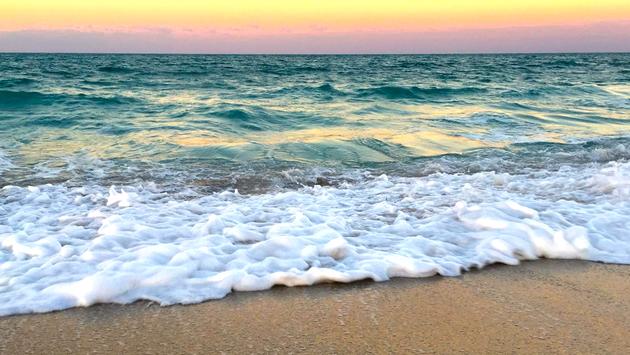
The inaugural edition of the MICHELIN Guide Miami, Orlando and Tampa, first announced in November of 2021 as a partnership between the respected restaurant review company and VISIT FLORIDA, the state’s tourism arm, is out.
The guide’s inspectors found a total of 15 restaurants worthy of the coveted MICHELIN stars – 14 which garnered a one-star review and one that earned two stars.
“As you can see, Miami, Orlando and Tampa have very much to offer to international food and wine enthusiasts,” Gwendal Poullennec, International Director of the MICHELIN Guides, said in a statement. “These talented chefs and their committed teams create culinary experiences matched only by the amazing attractions of each city. This very first selection of the MICHELIN Guide in Florida highlights glittery Miami, storied Orlando and breathtaking Tampa, offering a unique blend of international cuisine and Florida flavors. Local foodies as well as travelers will enjoy exploring these mesmerizing and rich Florida culinary destinations.”
The French eatery L’Atelier de Joël Robuchon in Miami received two MICHELIN Stars, with inspectors saying “The menu offers both tasting portions and large plates; but go with the seasonal prix fixe. The bread basket is a lovely opener, arriving in advance of such thrilling bites as a seared sea scallop with toasted spices. The Design District setting bears all the beloved hallmarks with its counter and open kitchen.”
The restaurants with a one-star MICHELIN rating were:
- Ariete (Miami, Contemporary cuisine)
- Boia De (Miami, Contemporary cuisine)
- Cote Miami (Miami, Korean cuisine/steakhouse)
- The Den at Sushi Azabu Miami (Miami Beach, Japanese cuisine/sushi)
- Elcielo Miami (Miami, Colombian cuisine)
- Hiden (Miami, Japanese cuisine)
- Le Jardinier Miami (Miami, French cuisine)
- Los Félix (Miami, Mexican cuisine)
- Stubborn Seed (Miami Beach, Contemporary cuisine)
- The Surf Club Restaurant (Surfside, American cuisine)
- Capa (Orlando, Steakhouse)
- Soseki (Orlando, Fusion/sushi)
- Kadence (Orlando, Japanese cuisine/sushi)
- Knife & Spoon (Orlando, Steakhouse)
United’s Away amenity kits
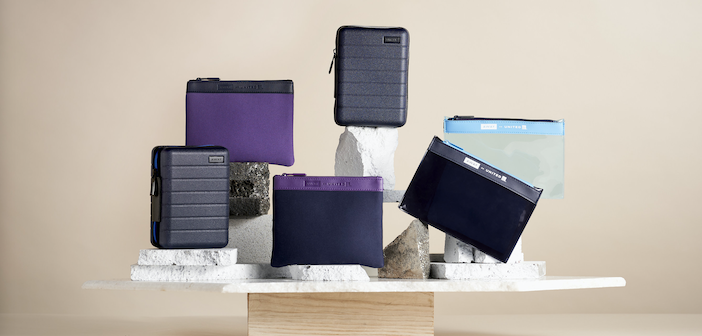
United Airlines is introducing new, co-branded amenity kits in its premium long-haul cabins, designed by Away, a global travel luggage and lifestyle brand, and enabled by Buzz, an Australia-based amenities specialist. The kits are inspired by Away’s range of suitcases and accessories, with three versions on offer, each containing custom travel essentials and a range of Sunday Riley cruelty-free skincare products. The collaboration is the first time Away has partnered with a commercial airline.
The three kits, all of which can be reused on future journeys, comprise a hard case version, a sports pouch and a zip case. The ‘Hard Pod’ is for travellers flying in United Polaris business class on long-haul international flights, with a sturdy shell and interior elastic band to help keep belongings organised. The sports pouch is for travellers flying in United Premium Plus on long-haul international flights, made of a soft, protective material you can keep belongings organised. The zip case, for travellers flying in United Business on premium transcontinental flights, is a water-resistant kit that is ideal for storing liquids and moving quickly through airport security lines.
“As travel demand continues to rise to unprecedented levels, travellers are seeking comfort and quality now more than ever when they fly – that’s why we chose to partner with Away,” said Luc Bondar, United’s VP of marketing and loyalty and president of MileagePlus. “Away’s mutual commitment to making travel more seamless, elevated and modern design aesthetic is in perfect harmony with United’s brand, and we’re thrilled to have the opportunity to be the only airline to provide this unique offering to our customers.”
What’s in the kits?
In addition to co-branded personal care essentials like earbuds, an eye mask, and a dental kit, the Away amenity kits will include United’s In-Flight Remedy skincare products from Sunday Riley, custom-developed for the long-haul flight conditions. The amenity kits include a variety of Sunday Riley products, from face creams and cleansing cloths, to hand creams and lip balms, all formulated with hydration in mind.
The Safest cities for summer travel in the United States

The Safest US Cities for Summer Travel
Safety continues to be a top priority for travelers amid the ongoing COVID-19 pandemic. Fortunately, summer vacationers have plenty of secure destinations to choose from in 2022. Looking at some of the most recent COVID-19 safety metrics, including vaccination, positive testing and hospitalization rates and FBI crime statistics for violent and property-related offenses across the country, we can single out some of the U.S. cities faring the best when it comes to keeping visitors safe right now. Whether you’ve got your sights set on a return to a big city or perhaps a visit to a lesser-known destination, consider one of these places for your worry-free summer getaway.
San Diego, California
San Diego is the second-safest large city (population of 500,000-plus) in the U.S., based on recent FBI data on crime rates analyzed by CCTV Camera World. In the U.S. as a whole in 2020, crimes occurred at a rate of 2,356.7 per 100,000 people. However, America’s Finest City recorded a lower combined crime rate at 2,060.65. What’s more, California ranked fourth in the personal finance website WalletHub’s most recent COVID-19 safety study with a score of 74.51. The Golden State also reported the third-lowest positive testing rate.
New York, New York
New York City’s robust population and relatively small surface area can certainly create an illusion of danger but the reality is that the Big Apple is a safe place for tourists. Like San Diego, NYC is one of only four large cities in the country to report a combined crime rate in 2020 that was lower than the national average at 2,136.29. The stellar summer weather also means visitors can spend more time outdoors spaced out from the crowds.
Boston, Massachusetts
Boston is another safe destination for travelers this summer. The Massachusetts capital and New England’s largest city boasts the fifth-lowest crime rate among large U.S. cities based on the latest FBI data. Plus, Massachusetts is tied for the highest COVID-19 vaccination rate in the nation. As the weather warms, outdoor attractions such as the Freedom Trail, Fenway Park and the Boston Common offer visitors the opportunity to explore in the fresh air.
Las Vegas, Nevada
Sin City is well-equipped to safely entertain visitors along the walkable Las Vegas Strip as it ranks sixth-safest among big cities in terms of crime rate. More broadly, Nevada also ranks seventh nationwide in terms of COVID-19 safety, according to WalletHub’s most recent research.
Los Angeles, California
Elsewhere out west, Los Angeles fares better than most when it comes to violent and property crime rates, ranking inside the top 10 among large cities at a rate of 2,869.93 per 100,000 people. The City of Angels offers numerous neighborhoods to explore as well as expansive beaches and scenic parks.
Gilbert, Arizona
Located just outside of Phoenix, Gilbert provides travelers with a wide range of exciting attractions and activities ranging from scenic hiking to sampling delicious farm-to-table meals. What’s more, Gilbert is the sixth-safest mid-size city (population between 150,000 and 500,000) in the country, according to the latest FBI data, with a combined violent and property crime rate of 1,187.08 per 100,000 people.
Rapid City, South Dakota
WalletHub recently found South Dakota to be the safest state in the country in regards to the ongoing COVID-19 pandemic. Analyzing vaccination rates, positive testing rates, hospitalization rates, death rates and the level of community transmission, the personal-finance website scored the state at 81.8. Visitors seeking a safe getaway to the Mount Rushmore State can look forward to tons of outdoor adventure in Rapid City, which is convenient to a slew of can’t-miss attractions including Mount Rushmore National Memorial, Custer State Park and the famous Badlands.
Wilmington, North Carolina
According to WalletHub’s most recent study on the safest states during COVID-19, North Carolina ranks second with a total score of 75.16. The state was tied for the lowest COVID-related death rate. For travelers visiting North Carolina this summer, Wilmington offers something for everyone, from the sun, sand and sea in nearby Wrightsville Beach to the charming Wilmington Riverwalk downtown. In between, visitors will find mouthwatering restaurants and brewing companies such as Indochine and Flying Machine in addition to stellar attractions like museums, gardens and historic houses.
Hotel versus a vacation home for your summer holiday?
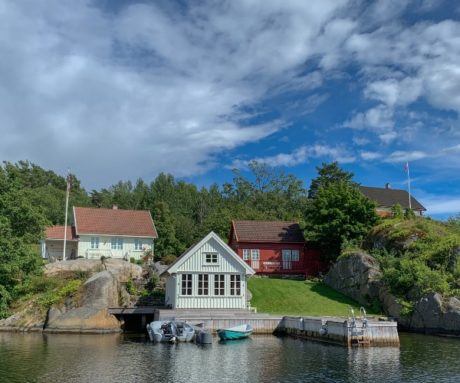
Travel patterns change all the time, but definitely in the past year during the pandemic travel patterns have changed extremely. For many they have been non-existent, and for some, domestic travel has been rediscovered. The means of travel and choice of accommodation has shifted as well, where many have travelled by car and train and stayed at smaller properties compared to previous years. Now we find ourselves in 2022, and I wonder what the traveler would choose for their future travel plans: the traditional hotel, or a vacation home?
I believe to be the pros and cons for both choices. I’d love to hear your thoughts and choice of course, so let me know in the comments what you would be choosing!
The traditional hotel
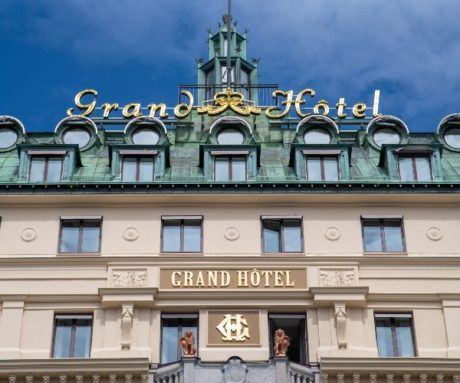
Of course, the term “traditional hotel” is a bit confusing, there are so many different hotels these days all with their own focus and it would not be fair to put them all under the same term being “traditional hotel”. But for the sake of this blog, I will define the term “traditional hotel” as a hotel with a minimum of four stars, perhaps a boutique hotel but could also be chain affiliated. Certain services available, such as WIFI, room service, and daily housekeeping. And a level of facilities present, think of e.g. one or two restaurants, a gym and/or spa, meeting rooms, business room, you get the idea.
The pros of choosing a hotel would definitely be the level of service. This can vary per hotel as well, but in essence, each standard hotel has staff present at all times that are there to be of assistance with anything. After a long journey, the doorman is there to welcome you to the hotel and assist with your bags. Perhaps you forgot to pack your toothbrush, the housekeeping department will bring up a dental kit. If your hotel has a concierge, you are sure to get the true insider tips on what to do and where to go, plus assistance with booking restaurant tables or perhaps booking concert tickets.
The cons of choosing to stay at a hotel have perhaps become negative aspects only since last year. The pandemic has all of us forced to rethink public places, and we all almost immediately shy a bit away from crowded areas. Many hotels do nowadays have a cleaning certificate or stamp to prove their hygiene levels. But staying at a hotel still means having to touch many surfaces that are constantly used by many before you and many after. Depending on the size of your travel party and the length of your stay, choosing a hotel could also turn out to be a more expensive choice and it is worth considering the value for money compared to the sizes of the rooms provided.
The vacation home

The past year the choice for booking vacation homes has surged understandably, and that is why my interest for this question has been sparked. It will be interesting to see if a vacation home will be something that will be chosen for the foreseeable future, or was it perhaps a pandemic solution only? Vacation homes also vary immensely in their offering, so for this blog let’s compare a vacation home that is located directly at the water, a 20-minute drive to the nearest town/center with café’s and restaurants. The home has for example four bedrooms, a large living room, TV snug, and a sauna.
The pros of the choice for a vacation home in the past year has been in one word: PRIVACY. You and your family are the only ones moving around the space and it is (hopefully) not possible to get infected with any viruses since there is no contact with any employees or other guests. Another pro would be the value for money, more often than not renting an entire house could cost around the same as booking four hotel rooms. Plus, there is so much more space at your disposal, not to forget the private water access, perhaps a large garden, and loads of space for family quality time.
The cons most clearly point to a few aspects; there is no local staff to assist with restaurant bookings, no maintenance present if something goes wrong, and lastly no in-house restaurant. Unless you go all out and hire a private chef during your vacation home rental, it will be lots of home cooked dinners and someone will be sweating away in the kitchen. Luxury vacation homes can provide daily housekeeping, but most don’t. And lastly, most vacation homes are not located in the city center, meaning the nearest town would be a slight distance away (if lucky walking distance and everyone can enjoy a few glasses of wine when dining out ;)).
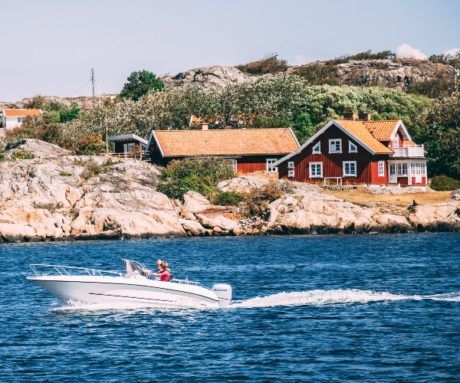
Perhaps the daily housekeeping service is not something the luxury traveler of the future is necessarily looking for. And perhaps local tips on which restaurants are the best, can all be provided digitally. Or perhaps the hotels of the future will minimize the amount of touch points in hotel rooms and become even more conscious on minimizing the risk of spreading diseases. There have been several luxury villa rental companies specializing in hotel services during the guest’s villa rental, blurring the lines between these two accommodations, could that be the perfect choice for the future?
I’d love to hear which form of accommodation you would lean towards in the future and also what your reasons would be. So please let me know in the comments!
By Simone Kruithof
Air New Zealand unveils its new menu

Air New Zealand has unveiled its new in-flight menu which highlights the finest New Zealand produce.
The carrier’s new Business Premier menu showcases the best of Aotearoa on a plate, including local ingredients like Southland Lamb Prosciutto, Hawke’s Bay extra virgin olive oil and mānuka smoked free-range chicken from the Waikato.
The menu will be officially launched and rolled out on all long-haul routes from October.
Air New Zealand General Manager Customer Leeanne Langridge says: “We all know how important food is when travelling and what a difference it makes to our customers to be served a tasty meal full of fresh, local produce while on their journey.
“Our inflight meals showcase the best of New Zealand produce to the world, and also gives our Kiwi customers a taste of home from the moment they are welcomed onboard.
“Through customer research we found our Premium customers wanted more choice in the air, so we’ve added a build your own component to the main meal service. Customers can add the likes of seared salmon from Marlborough, free-range chicken from Waikato or bacon for greater protein, or streamed green vegetables or fresh, crisp salads picked straight from orchards and fields in Gisborne, Waikato or the Manawatū.”
Many of the meals like the artisan pasta bowl and superfood salad are also vegetarian, giving our customers plenty of meat-free options. The carrier will be refreshing its Premium Economy and Economy menus at the same time.
According to Air New Zealand, sustainability has been at the forefront of developing the new menu, and the airline will also be rolling out new sustainable serviceware in all cabins which reduces weight and single-use plastic on the aircraft.
How to eat like a local in Melbourne, the ‘culinary capital’ of Australia

The chefs of Melbourne are a proud bunch — and they create dishes that travelers won’t find anywhere else in the world.
They understand food, make the most of the seasonal produce and like to create an experience as much as fine flavors.
From breakfast through closing time, here are five dishes that define the food scene in Australia’s most livable city.
The best croissant in the world, according to many, including the good folks at The New York Times, may be in Melbourne.
Kate Reid studied the art of making croissants at Du Pain et des Idees, the popular Parisian boulangerie. After much trial and error adjusting recipes to allow for local ingredients, the self-confessed control freak — Kate’s an engineer who used to design race cars — mastered the art before opening Lune Croissanterie.
Now, carb-scoffing visitors to this warehouse space in Fitzroy can watch as her bakers laminate, egg-wash and proof the pastries in a climate-controlled glass cube. A dozen varieties are made each day, but firm favorites include the cruffin — a cross between a croissant and a muffin — and the twice-baked croissant.
The flavors of the latter change regularly, but the coconut rough croissant, with its rich ganache and toasted coconut flakes, is also popular.
Not your average dumpling
Fans of Cantonese cuisine are likely familiar with siu mai, a delicate steamed dumpling commonly filled with pork and prawn.
During the 1940s, siu mai was adapted to suit the palates of the Melbourne populace. The result lives on in a distinct new dumpling, now known as a dim sim (yes “sim,” not “sum”) or simply “a dimmy” as it’s known in Melbourne.
Those bigger parcels with thicker skin were perfected by Ken Cheng, who set up a stall in the South Melbourne Market many years ago. His round morsels were filled with beef, pork, lamb, cabbage and spices, and they haven’t changed much since Cheng began selling them in 1949.
His sons, Edward and Phillip, now run South Melbourne Market Dim Sims, where they sell their dad’s dumplings as well a popular fried version too.
How best to eat them? With your fingers and dipped in a little soy sauce and chili.
Love the black stuff
In 2018, two weeks before he opened his Southeast Asian restaurant Sunda, chef Khanh Nguyen decided he should put a roti dish on the menu. The buttery Indian flatbread is usually served with a bowlful of traditional curry. But Nguyen had another idea.
“The idea of Vegemite curry came up when I was talking about bread with a colleague,” said Nguyen, referencing the thick salty spread that is beloved by Australians. “The word yeast came to mind, then Vegemite popped into my head.”
Nguyen was excited about it, but no one he told believed it would work.
“My first version of it tasted so weird!” said Nguyen. “I had sleepless nights and changed the recipe a few times, then it eventually turned out to be what it is today.”
Now the delicately spiced, umami-intense dish is one of the most popular items at the restaurant.
“Diners are usually quite skeptical about it at first,” said Nguyen. “Then they end up loving it.”
The dish is now served as a “special” at Sunda, and Nguyen estimates he’s served it over 15,000 times since opening his restaurant.
Slam it down
In Australia, a pie is generally thought of as a snack you eat at a sporting event. They’re hot, filled with minced meat and gravy, and always served with a packet of “tomato sauce,” the Australian term for ketchup.
Chef Raymond Capaldi has taken them to another level at Wonder Pies, which has several locations in Melbourne including the popular Collingwood outlet.
“I realized everyone was doing the same sort of pie, so I thought I could come up with new flavors,” he said.
He observes food trends and incorporates them into flaky pastry perfection. There’s macaroni and Cheezel pie (macaroni, vintage cheddar and mustard topped with Cheezels crumbs, an Australian snack similar to Cheetos) and one filled with duck confit and coffee sauce.
“We push the boundaries without being too Frankenstein for the market,” said Capaldi.
The Tradie Slammer is another surprise hit at Wonder Pies. Available during Australia’s winter months (June to August), it’s a pie in a brioche bun served with house-made chutney — a creative tip of the hat to Capaldi’s Scottish background.
“When we had no money in Scotland, we used to put a pie in a roll — and it would last us half the day,” he said.
Freshwater wonders
One of the most sought-after tables in Melbourne, if not all of Australia, Chef Ben Shewry’s Attica is touted as Australia’s finest dining experience.
The restaurant is known for its innovative tasting menu, which is stacked with native ingredients like kangaroo, crocodile, saltbrush and murnong (an Australian yam).
A highlight is the marron — a freshwater crayfish that rarely leaves the menu. The slightly sweet crustacean is extremely versatile and works with the restaurant’s seasonal menu changes.
“It’s currently paired with sunrise lime, as both ingredients come from Western Australia,” said Shewry. “The zing of this citrus really makes the marron sing.”
Carrie Hutchinson www.cnbc.com
These 6 private islands cost less than an apartment in Europe
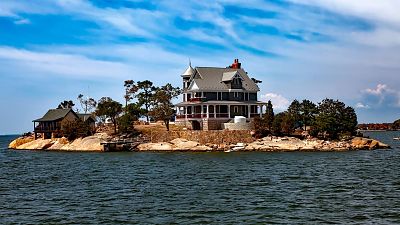
With much of the world now open for tourism, it’s time to start brainstorming our holiday options. From sun-soaked villas to bustling city apartments, now could be time to invest in accommodation of your own after months of home working and travel bans.
Here at Euronews Travel, we want you to dare to dream a little. What if you could buy your own private island for the same price as a private European apartment?
These options aren’t quite at the level where you’d be giving Richard Branson a run for his money any time soon. But we’ve found a host of holiday spots that could cost the same as a Spanish two-bed, with loads more space and a host of other features.
Every property here is featured on Private Island Magazine, home to one of the world’s biggest databases of exclusive isles.
Here are six stellar finds, along with what you’d get for the same price if you were to buy somewhere outright across Europe.
6. Big Tancook Island, Nova Scotia – €56,898
Big Tancook Island is on the market as an island parcel, meaning you can purchase part of the island for a family compound, hotel or camp site. An incredible buy, given we struggled to find an equitable one-bed holiday comparison.
A space in this Canadian province provides a staggering deal for fans of the simple life. Nova Scotia’s rocky shorelines and secluded ponds are big with fishermen, some of whom make up the small group of 125 residents living there.
5. Danhattan Island, USA – €263,281
Now sold, Connecticut’s sleepy, rural Danhattan Island is ready-fit with a woodland chalet that sleeps eight.
The land sits upon Ashland Pond, with its buyers getting first dibs on the mainland’s docking ports because the deal comes with a boat. Yes, a whole boat.
What you could get for that price in Europe: A one-bedroom property in a gated community in Funchal, Madiera for €265,000
4. Majestic Island, USA – €274,982
Wisconsin’s Beaver Dam Lake is home to less than 26 creatively-titled islands throughout its 2,719-hectare expanse. Majestic is probably one of the less nonsensical, but does it really matter when you’re sitting on a private island?
Majestic went on the market last year with an off-the-grid cottage in tow, the perfect place to watch the gentle activities surrounding Beaver Dam’s animal life.
What you could get for that price in Europe: A 131 square metre one-bedroom apartment in Marbella, Spain for €287,700
3. Bocal Island, Nicaragua – €292,535
We’re entering resort territory here. This island sold last year and was accompanied by a two-bedroom guest house, a caretakers house, an infinity pool, a cement pier and miles of sandy beaches.
It would go for a much higher price, given its surface area and Nicaragua’s gorgeous tropical climate. The reduction comes as a result of the owner taking up extensive refurbishments to the island’s features, so the lucky future buyer has lots of new things to look forward to.
What you could get for that price in Europe: A 51 square metre one-bed sea view flat in Palma Nova, Mallorca for €295,000
2. Isla Carabana Sol, Panama – €336,782
This island comes complete with a sailboat mooring, speed boat garage and a property with two self contained apartments that are ready to move into.
It was likely designed with party people in mind given its additional features: a raised deck complete with BBQ, hot tub, tiki hut, private sandy beach and a private clear water swimming lagoon.
To avoid feeling too cut off, the island also offers great wifi and phone signals and is located just a short boat ride from a number of bars and restaurants.
What you could get for that price in Europe: A one-bed property in the Quartier Vernier in Nice, France for €338,000.
1. Iguana Island, Nicaragua – €396,951
The most expensive of our findings contains two hectares of white beaches and sheltered rainforests, cloaked in coconut palms and banana trees for maximum privacy.
Its property includes a three-bed, two-bathroom house, wrap-around porch, dining room, bar and living area, as well as staff accommodation. There’s also a boardwalk that stretches around the island and an 8.5-metre watchtower. All for the price of a studio apartment in the likes of Paris, London or Rome.
What you could get for that price in Europe: **A luxury sea-front apartment on the Mediterranean coast in Collioure, France. **
First time on a yacht? Avoid these 7 amateur mistakes
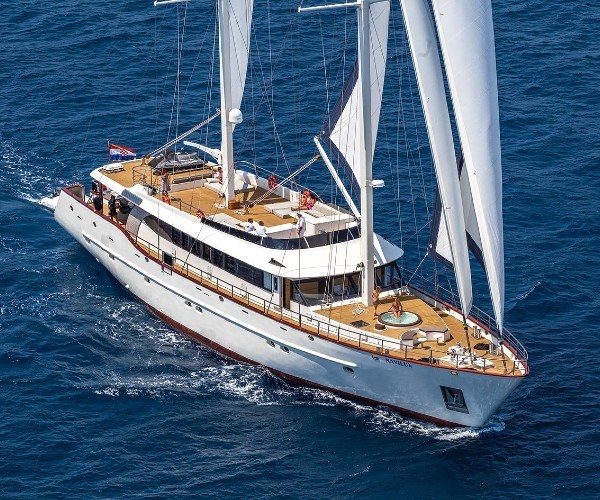
While most of the travel industry struggled to get back on its feet, the yachting industry had a different problem during the pandemic: serving everyone wanting to charter a boat.
Like the rise in private jet travel during the pandemic, charter demand remains “extremely strong,” said Crom Littlejohn, chief commercial officer of the yacht brokerage company Northrop & Johnson. He said he expects interest to remain this way “for the foreseeable future.”
But it isn’t the same people who have always traveled via sea, he said.
“A big percentage of our business is first-time charters,” said Littlejohn. “They’ve had the ski vacations … they want to try something different.”
Insiders share with CNBC the seven common mistakes of those new to the industry.
Mistake #1: Hard-shell luggage
There are several reasons to leave hard-shell suitcases at home, said Littlejohn.
In the same way that they scuff hotel room walls, hard suitcases can damage the fine finishes on yachts, he said.
“Things bounce and hard things might mar the surfaces,” said Littlejohn.
Then there’s the issue of storing suitcases that don’t collapse. “You can imagine how much [luggage] ten people or 12 people on charter could bring if they were bringing hard luggage,” he said. “It takes an additional room to store it.”
“The more soft-sided duffel bag type luggage, the better for storage and moving around the boat,” he said.
Mistake #2: High heels
Soft-soled shoes are more appropriate than high heels, said Littlejohn, but “we’re going to ask you not to wear the shoes on board period.”
Travelers are free to pack high heels for land excursions, he said, but even in the south of France – where nightlife is often a big part of the charter — cobblestone roads may make comfortable shoes a better option, he said.
But rules on shoes can depend on the yacht owner, said superyacht influencer Denis Suka, who is known as The Yacht Mogul online.
If guests are uncertain about a yacht’s shoe policy, they can keep an eye out upon boarding, said Suka. Look for “pairs of shoes [at] the entrance,” he said. That means shoes aren’t allowed on the boat.
As for what to pack, Suka recommends “keeping it light” with clothes that have “summer vibes,” calling this part of the rules “that are pretty much set in stone.”
Mistake #3: Not giving way on the passerelle
Passengers should board the passerelle — the walkway that is used to get on and off a yacht — one at a time, said Marcela de Kern, a business consultant for the yachting company Onboard Monaco.
“It’s quite fragile,” she said. “If you board at [the] same time, it can break,” she said, adding this can create “massive” problems in ports in Greece and Croatia, where it’s especially hard to get from yacht to port.
“The one leaving the yacht has priority, so if you are boarding and someone else is coming down, you should wait and let them get down first,” said de Kern.
Celebrities like the Kardashians have “no yacht etiquette,” she said, citing a recent video of them disembarking close together, one clad in high heels, from a yacht in Portofino.
Mistake #4: Not planning for extra expenses
New entrants to the industry shouldn’t spend their entire budgets on the charter rate.
“Then you have the rest of your expenses,” said Littlejohn. “With VAT taxes and beverage and food … dockage and fuel, you’re going to add another 75-100% to the cost of that charter.”
Weekly charters with Northrop & Johnson range from $32,000 to $490,000, plus expenses, according to a company representative.
“There are charters happening in all the price ranges,” he said. He advised working with a broker who is familiar with the boat size and location that travelers want to book.
Without a broker, travelers new to the industry “might end up paying more for a yacht instead of having a better one for the same price,” said Suka.
Brokers can match clients with the right crews too, said Suka. That’s important because travelers and crew members can spend time together for days, if not weeks, at a time, he added.
“It’s not cheap to charter a yacht, so [clients] have to get the very best out of it,” he said.
Mistake #5: Not connecting with the crew
Getting to know the captain and the crew is the best way to receive top-notch service, said Suka.
When the “yacht is docked then the crew will definitely give you the best tips [on] what to do and where to [go],” including “restaurants, coffees or other attractions because they know the area very well.”
If all goes well, travelers may charter the same yacht again, so it’s all the more reason to establish a good relationship with the crew at the beginning, he said.
Onboard Monaco’s de Kern advised travelers to greet the crew at the beginning of the trip.
“Ask for their names, shake their hands and show some respect for the captain on board,” she said.
Mistake #6: Scheduling too many activities
Don’t pack the days with activities, said Littlejohn.
For land excursions, he advised planning no more than one two-hour inland trip per charter week.
“Most of the folks are probably spending half of the day on board the boat, playing with water sports … and enjoying the boat itself,” he said. Then the other half of the day maybe spent going on an excursion, take the tender out. You might go in and explore … the lands and the islands.”
Then it’s back to the boat for “a wonderful evening aboard,” he said.
Mistake #7: Waiting to book
Littlejohn recommends booking “as early as you possibly can.” He said to start looking anywhere from six months to one year out.
Northrop & Johnson is already making bookings for the Christmas of 2023, he said. Booking this early isn’t uncommon for the bigger, more expensive boats, he said, but since the pandemic, “we’re seeing it in the mid-range as well.”
But there are still some last-minute charters available for this summer, he said.
Monica Buchanan Pitrelli www.cnbc.com
Singapore Airlines opens new flagship lounges at Changi T3
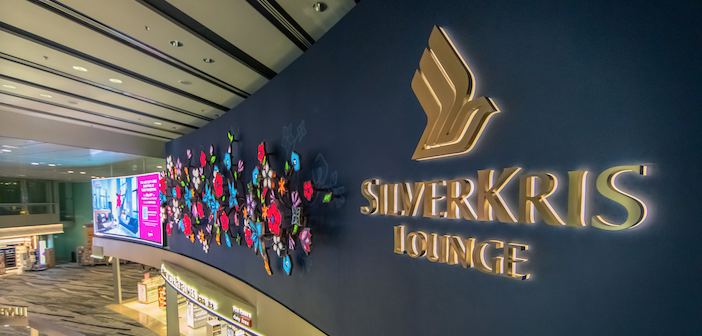
Following a S$50 million (US$36.47m) redesign, upgrade and expansion project, Singapore Airlines (SIA) has opened its all-new flagship SilverKris and KrisFlyer Gold lounges at Singapore Changi Airport Terminal 3. The investment has been made to further enhance the on-ground customer experience at the airline’s main hub, and comes as SIA says it is seeing demand for international air travel from and through Singapore taking off once again.
The lounges cover 6,100 square-metres, and comprise the Private Room, the first class section of the SilverKris Lounge, the business class section of the SilverKris Lounge, and the KrisFlyer Gold Lounge. The lounges can collectively accommodate around 1,150 customers, which is a 30% increase in seating and space. This is double the capacity that was available during the pandemic while the upgrading works were going on.
SIA worked with Singapore-based hospitality design firm, Hirsch Bedner Associates, to create what they call a ‘sanctuary’ that will please diverse groups of travellers, based on the results of extensive customer engagement and research. The Private Room is the most exclusive space within the SilverKris Lounge, which can host 78 Suites and first-class customers. The exclusivity is reflected in its design elements, which include a custom-designed Lalique light dome in the lobby, booth seats and day rooms. The Private Room also offers a full fine dining experience, with cuisine and beverage options.
The first-class section is available to Solitaire PPS Club members, as well as access to the SilverKris Lounge’s First Class section, which offers many cosy seating and resting options. The space includes new day rooms for privacy, which come with either a recliner or a Tempur Zero Gravity bed with a Supreme Firm mattress.
The bar is decked with Lalique crystal flowers inspired by Aquatic Ginger, a flower in SIA’s signature batik motif, and now offers a wider selection of beverages, including fresh barista-made coffee in the morning and signature cocktails in the evening.
Business class
The business class section of the SilverKris Lounge is 20% larger, with four distinct seating sections. These sections include a quiet rest area for a quick nap, a main dining hall with a self-service buffet, a living room area with sofa seats and ‘productivity pods’, as well as a courtyard-style area that offers light bites. A new full-service bar, with a barista in the morning and bartender service in the evening, allows customers to relax while enjoying a view of aircraft taking off and landing.
“Opening these lounges at this time signals our commitment to SIA’s premium brand and growth strategy. It reinforces our position as Changi Airport’s anchor airline, and reflects our confidence in Singapore’s future as a pre-eminent global air hub,” said Goh Choon Phong, CEO of Singapore Airlines.
Can Venice survive the rising tides and climate change?

The island of Venice, crisscrossed by hundreds of winding canals, lives in symbiosis with the Adriatic sea. Water is vital for the city’s transport, industry and tourism.
But it has also become a threat as climate change and rising sea levels cause increasingly frequent and dangerous flooding. So what is the future of Venice and water?
A city dependent on water
The 150 canals that weave through Venice are the city’s streets and roads. Water buses, delivery boats, and emergency services rely on the waterways to move around the historic city and the outlying islands.
Water is just as indispensable for many of the city’s industries too. Historically, Venice was a major port for goods moving between Europe and Asia.
It also had an important shipbuilding sector. Today, a few shipbuilders still construct traditional Venetian boats like gondolas.
One of the biggest modern-day water-based industries is fishing. Fishermen head out daily into the lagoon and beyond and bring their catch — including species unique to the lagoon such as soft-shell crabs — to the renowned Rialto Fish Market.
The port of Venice is vital to the economy of the city too. It is the eighth-busiest commercial port in Italy and a major hub for cruise liners.
Venice’s water tourism
The canals and the surrounding lagoon are also a fundamental part of the cultural and touristic attraction of Venice. Visitors delight in the picturesque waterways with their quaint bridges as well as the wild, mesmerising expanse of the lagoon.
To experience life on the water, tourists can take rowing lessons in the canals on traditional boats or join excursions to see wildlife or try fishing in the waters surrounding the city.
A fragile lagoon in need of safeguarding
While water is fundamental to life in the city, it is also at the mercy of human actions. Heavy boat traffic and overly large vessels sailing through the narrow canals and the shallow lagoon have been damaging the sea bed and marine life.
Their impact came under the spotlight in 2020 when the canals became miraculously clear and full of sea life as coronavirus lockdowns halted traffic in the city.
Venice’s cruise ship ban
The oversized cruise ships that, until recently, passed directly in front of St Mark’s Square have also caused significant problems. Their waves erode the foundation of the city while the deep channel in the lagoon they travel through must be regularly dredged, removing animal and plant life in the process.
Last year, authorities took the much-needed decision to ban large cruise ships from some areas of the lagoon.
Under the government plan, oversized liners can no longer pass through St Mark’s Basin, St Mark’s Canal or the Giudecca Canal but must instead be diverted to the nearby industrial port of Marghera.
This seemed like a victory for the activists protesting the presence of big ships in the lagoon. But they point out that as Marghera is still in the Venetian lagoon, the ecosystem remains at risk.
Will Venice go underwater?
In November 2019, Venice experienced some of the worst flooding in the city’s history. The waters rose to 187 centimetres above sea level, the second-highest level ever recorded. It caused hundreds of millions of euros worth of damage.
Since then, a flood protection system consisting of mobile barriers at the entrances to the lagoon has been completed and put into action. It has been hailed as a miracle solution, but climate forecasts suggest it’s only going to help in the short term.
A 2021 report from the Intergovernmental Panel on Climate Change predicted a possible sealevel rise of 63cm to101cm in the worst-case scenario.
To prevent vast areas of the city flooding, the barriers in the lagoon would need to be put into action so frequently it would have disastrous consequences for the ecosystem and the port industry.
The tidal exchanges between the lagoon and the sea also work to remove waste from the city. This means that Venice still does not have a comprehensive sewage system. With the mobile barriers closed too frequently, the lagoon would quickly become a fetid swamp.
Will Venice survive climate change?
Venice needs radical and immediate action to begin preparing for the inevitable future of rising sea levels.
A group of environmental scientists from the University of Padua is pushing for greater protection of the salt marshes in the lagoon. The increasingly frequent closure of the flood barriers is preventing silt and mud from entering to replenish these salt marshes. Without this, they will soon disappear.
The mudflats need protecting as they act as buffers to shield the city from high tides and are also a powerful carbon sink. Other, more outlandish ideas, include pumping water into the ground beneath the lagoon to raise the city by several centimetres and constructing a wall around the island.
While they seem like extreme solutions, it might not be long before they are what’s needed to keep Venice’s relationship with the water a good one.
KLM introduces its premium economy class
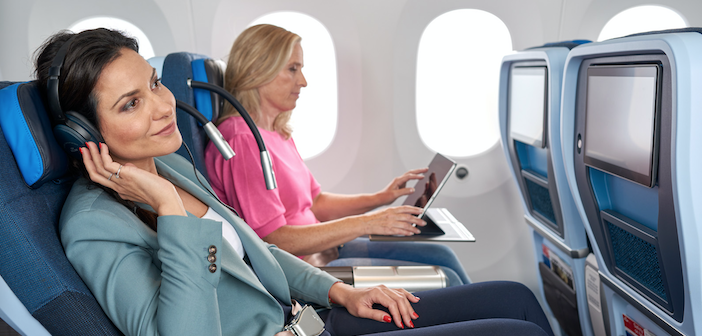
KLM Royal Dutch Airlines is introducing a premium economy travel class, an intermediate cabin offering with more space, luxury, service options, comfort and privacy than in economy class, at lower prices than its World Business Class. Named Premium Comfort Class, this option has been designed to appeal to both leisure and business travellers.
Premium Comfort has its own dedicated cabin, with 21 to 28 seats, depending on the aircraft type. The seat is a new, lighter weight version of Collins Aerospace’s MiQ platform, which brings comfort enhancements over KLM’s standard economy seats, including more seat pitch (38in vs 31in), a deeper recline (8in vs 5-7in), a larger IFE screen (13.3in vs 9-11in) and a footrest. The seat was customised in a joint project between Collins Aerospace and specialists at KLM Customer Experience.
The reconfiguration of aircraft cabins to accommodate Premium Comfort will be carried out by KLM Engineering & Maintenance at Amsterdam Airport Schiphol.
Catering
Premium Comfort also has its own catering concept. On intercontinental services, one or two hot meals will be served, depending on the duration of the flight, with a choice of meat, fish or vegetarian dishes. After the meal, passengers will be offered coffee, tea, liqueurs and ice cream. Snacks and cocktails will also be served between meals, which will be largely selected from those that were previously popular in World Business Class.
The catering materials used in Premium Comfort will be mostly reusable, including the cutlery, bowls and plates made of lightweight polypropylene, while those that are not reusable are made of recycled PEF. All materials were carefully assessed in terms of circularity and weight.
“We have great expectations for this new Premium Comfort Class, based on extensive market research. The new class will meet the wishes of business passengers as well as leisure travellers, strengthening KLM’s standing as a global network carrier offering an appealing and varied range: World Business Class, Premium Comfort and Economy Class. It also reaffirms our partnership with Delta Air Lines, Air France and Virgin Atlantic on North Atlantic routes, where we can now combine all products on all routes.,” said Boet Kreiken, executive vice president of customer experience at KLM.
The first aircraft equipped with Premium Comfort Class will operate on routes to North America, and KLM expects that passengers will be able to book Premium Comfort to a growing range of destinations from the end of July 2022.
